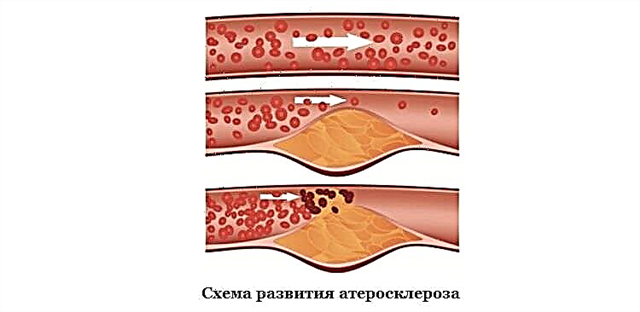What is bigeminy
Bigeminy is a type of allorhythmy, i.e. regular repetition of extrasystoles. There are also trigeminia and quadrigeminia.
Ventricular premature beats (PVCs) occurs due to a pathological excitation wave that emanates from the conduction system of the ventricles.
In general, PVC is considered a very common type of heart rhythm disturbance. Probably, each of us at least once in our life felt it. And even more PVCs are happening imperceptibly. In a day, the heart of even an absolutely healthy person can make up to 200 extraordinary ventricular contractions. And that's okay.
The main danger of PVCs is that they are capable of provoking severe cardiac arrhythmias, often fatal - ventricular tachycardia (VT), ventricular fibrillation (VF).
Another unpleasant consequence of extrasystole is the development of the so-called arrhythmogenic cardiomyopathy. With this pathology, the heart chambers expand, the myocardium's ability to pump blood normally deteriorates, and the likelihood of blood clots increases.
There are a lot of reasons for the occurrence of PVCs. By origin, all extrasystoles can be divided into 2 large groups: functional and organic.
Functional (non-cardiac) PVCs develop in people without heart disease for the following reasons:
- any physical activity;
- sneezing;
- sudden fright or prolonged emotional stress;
- smoking;
- the use of narcotic substances - cocaine, amphetamine;
- excessive consumption of coffee and caffeinated drinks ("Coca-Cola", "energy drinks");
- infections accompanied by an increase in body temperature;
- pathologies of the endocrine system - for example, excessive production of thyroid hormones (hyperthyroidism) or adrenal cortex (Itsenko-Cushing's disease, pheochromocytoma);
- the use of certain drugs;
- various injuries and injuries of the chest.
Organic (cardiac) PVCs are found in people with cardiac diseases (coronary artery disease, arterial hypertension, chronic myocardial insufficiency, rheumatism, myocarditis, heart defects, etc.).
In people with heart disease, extrasystoles develop much more often, are much more severe, and are more likely to cause VT and VF.
Clinical signs of ventricular extrasystoles
Most often, ventricular bigeminies, like ordinary extrasystoles, especially short-term ones, in small quantities, are asymptomatic. If they occur constantly, then there may be a feeling of "fading", "rolling", interruptions in the work of the heart. Sometimes there is slight dizziness, mild nausea. In some of my patients, bigeminy is accompanied by a feeling of anxiety, fear.
In patients with cardiac pathologies, the symptoms are more severe. Their eyes darken, their head is spinning much more, there is a pronounced feeling of nausea, vomiting, pain in the region of the heart, a feeling of lack of air. Fainting conditions are possible. This is due to the fact that regularly repeated extraordinary contractions lead to a deterioration in the pumping of blood by the heart muscle. As a result, there is a circulatory failure of the heart, brain, and other organs.
Signs of bigeminy on the ECG
Ventricular bigeminia has the following electrocardiographic features:
- premature appearance of a wide and deformed QRS complex;
- a compensatory pause following the complex, in the form of a straight line (usually longer than with supraventricular extrasystoles);
- lack of P wave;
- direction of the ST segment in the direction opposite to the QRS complex.
If all QRS complexes have the same shape, this means that pathological impulses arise in the same source. Such PVCs are called monotopic and are considered the most benign.
If the QRS complexes are different, then the impulses come from several foci. In this case, ZhE are called "polytopic". They are more dangerous in terms of the likelihood of adverse consequences.
Early PVC is also distinguished separately. This is when a prematurely emerging complex is layered on the T wave of the previous (normal) complex. The appearance of early extrasystoles is considered a very unfavorable sign.
It is the early extrasystoles that most often cause paroxysm of VT and ventricular fibrillation.
To accurately calculate the number of extrasystoles that occurred per day, as well as to identify possible other arrhythmias, I prescribe Holter ECG monitoring.
Are there any peculiarities in the symptoms
As already mentioned, ventricular extrasystoles of the bigeminy type do not have any differences in symptoms from ordinary extrasystoles. Everything is determined by the frequency of their occurrence, the number of sources of pathological excitation waves and the presence of cardiac diseases.
Case from practice
I want to tell you about one clinical case. A 56-year-old man came to my appointment. About a month ago, he began to be bothered by sudden sensations of interruptions in the work of the heart, dizziness, darkening in the eyes. Suffers from arterial hypertension. To reduce blood pressure, he takes Lisinopril, but not constantly. When examining the patient, I revealed an irregularity of the pulse, an increase in blood pressure to 150/90 mm Hg. I ordered Holter ECG monitoring. Result: frequent ventricular extrasystole of the bigeminy type, episodes of paroxysmal VT.
Echocardiography (Echo-KG) revealed left heart hypertrophy. Expansion of chambers, valvular defects, violations of myocardial contractility were not noted. Prescribed drug therapy: Lisinopril 10 mg per day, Bisoprolol 5 mg per day. Despite drug treatment, ventricular bigeminies and the resulting clinical picture persisted. In this regard, it was decided to carry out radiofrequency ablation. After the operation, the patient's condition improved significantly. The symptoms that bother the patient disappeared. The cardiogram has returned to normal.
Treatment
Before proceeding with the analysis of the methods of therapy, I want to draw your attention to the fact that special treatment of ventricular extrasystole of the type of bigeminy is required only with frequent occurrence of extraordinary contractions of the myocardium, severe symptoms or with a worsening of the course of the underlying cardiac disease.
The main goal of PVC treatment is to prevent life-threatening rhythm disturbances and arrhythmogenic cardiomyopathy.
When choosing a drug, I am guided by whether the patient has an organic pathology of the heart or not.
For patients without cardiac diseases, I prescribe class I antiarrhythmics - Propafenone, Novocainamide, Flecainide.
In patients with cardiac pathologies, these drugs, instead of a therapeutic effect, can have a proarrhythmogenic effect, i.e., on the contrary, provoke severe rhythm disturbances. Therefore, for them I use beta-blockers (Metoprolol, Bisoprolol), and in case of contraindications to them - Amiodarone.
Since amiodarone has a toxic effect on the thyroid gland, when prescribing it, I recommend that patients regularly donate blood for thyroid hormones (TSH and free T4).
If, despite drug therapy, ventricular extrasystoles do not stop, and the person continues to feel bad, he undergoes a surgical operation - radiofrequency ablation.
The essence of ablation is as follows - after preliminary local anesthesia, the patient is punctured by the femoral artery, through which a special catheter is inserted. Under X-ray control they get to the heart. Several weak electrical impulses are then applied to pinpoint the source of the excitation causing the extrasystoles. The detected focus of arrhythmia is destroyed by high-frequency current.
If the patient has already had repeated episodes of VT and VF, then the best way to prevent them later is to install a special device - a cardioverter-defibrillator. In the event of a life-threatening arrhythmia, it delivers an electrical discharge to the heart, thereby restoring the normal rhythm of myocardial contractions.
Expert advice
An important role in the treatment of ventricular bigeminia is played by the elimination of the causative phenomena. Therefore, I strongly recommend that my patients avoid all sorts of factors that can trigger the occurrence of extrasystoles. This means giving up bad habits (especially smoking), reducing the consumption of coffee and caffeinated beverages, and avoiding stress as much as possible.
People without cardiac pathologies, in whom frequent bigeminia of the heart was found on the ECG, should be examined for various diseases - endocrine diseases, iron deficiency anemia, chronic infections, etc.



